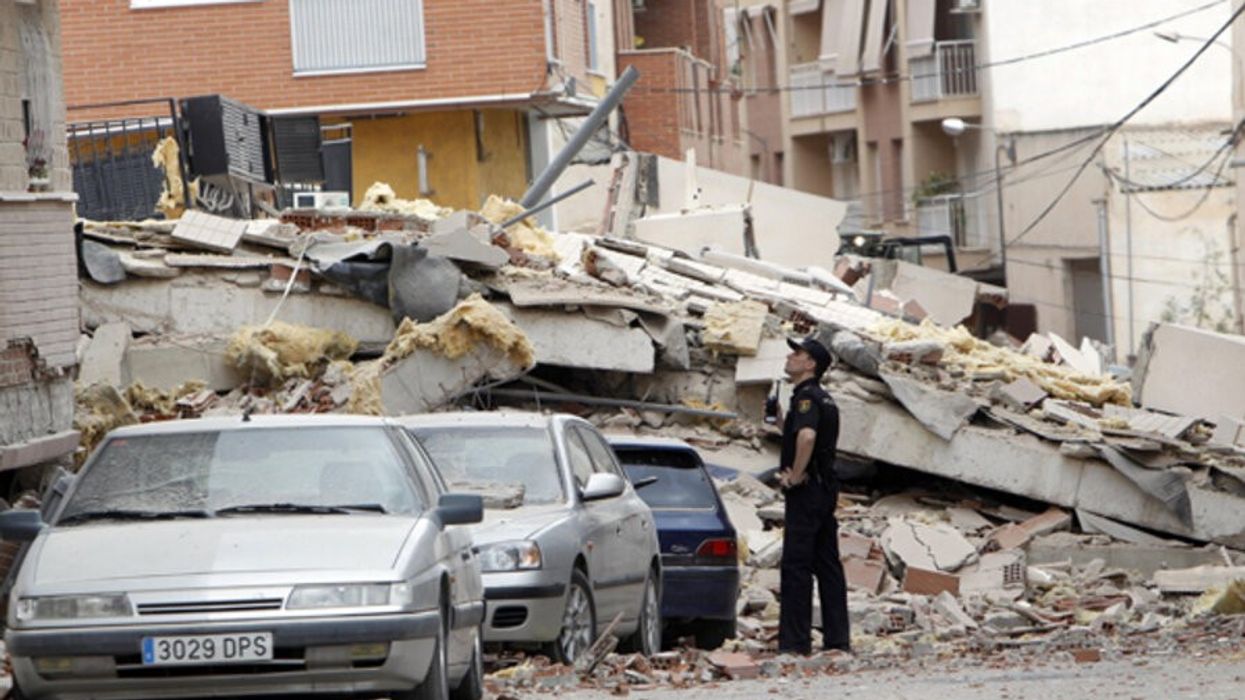When it comes to installing your own private power pole, there are several crucial considerations to make. This is not just about connecting a pole, but rather involving a comprehensive range of electrical tasks.
Many individuals may struggle with choosing the appropriate pole, understanding local building codes, and establishing a safe, reliable connection. An improper installation could lead not only to violations but also to electrical hazards. That's why it's crucial to get proper guidance before taking on such a project.
Over at thelocalelectrician.com.au, they've made it easy for you. They have developed a comprehensive guide to help you successfully navigate all the stages of installing your private power pole. This includes identifying the necessary tools, understanding foundational requirements, and adhering to safety measures, among others.
With the right guidance, you don't have to be overwhelmed by the process. Instead, you can efficiently complete your private power pole installation project in a safe manner while ensuring compliance with local regulations.
Choosing Private Power Poles
Private power poles can be a practical solution to supply electricity to your property. They provide a direct and reliable connection to the electrical grid, essential for many households. However, correctly installing a private power pole can be an intricate process requiring certain safety measures.
While professional installers are highly recommended due to the complex tasks involved, understanding the process will enable you to make better decisions and ensure safe practices. This section provides useful information that will assist you in comprehending and overseeing the installation of your private power pole.
- Selecting the right pole:Choose between wood, steel, or concrete poles based on your specific needs, aesthetic preference, and budget.
- Pole placement:The pole's location should not disrupt traffic or pose any risks. It should be placed at a secure distance from buildings.
- Considering utility lines:You must consider existing utility lines during installation. Always follow local regulations to avoid any hazards.
The market for utility poles in North America is projected to grow at a CAGR of approximately 3% till 2025 due to factors like residential and commercial construction boom, telecommunications advancements, and evolving electric infrastructure overhaul plans. So, there has never been a better time to invest in private power poles.
Understanding permit requirements and local codes is crucial before proceeding with pole installation. Permissions from the appropriate authorities such as local councils or an energy provider must be secured. Additionally, keeping your neighbors informed prevents misunderstandings or conflicts later on.
Safety must always be the utmost priority when working with electricity. Professional help is necessary for tasks like wiring and grounding the system as these involve dealing with high voltage electricity. Mishandling can result in deadly accidents, hence, always ensure that experts take care of it.
Types of Power Poles
When you decide to install a private power pole, it's essential to understand the various types available. Each type differs in material, cost, and longevity.
Let's start with wooden poles - the most commonly utilized option. They are economically viable and offer flexibility in terms of height, making them a popular choice for many.
For those looking for a more durable option, consider steel poles. These poles are rust-resistant and provide robust performance but might hike up your budget.
Fiberglass poles sit at the higher end of the price spectrum. While they require a significant investment upfront, their longevity and weather resistance make them worth it.
| Type | Material | Average Cost |
| Wooden Poles | Wood | $250-$700 |
| Steel Poles | Steel | $500-$1,200 |
| Fiberglass Poles | Fiberglass | $700-$2,000 |
| The costs only include the price of the pole itself. | ||
Note these figures may vary based on supplier and location. Remember, factor in installation and maintenance costs when making your selection.
Private Power Pole Materials
Your private power pole installation requires concise planning and knowledge of materials. It's crucial to understand their roles and the benefits they offer. Your project's success depends on the attention you pay to these details.
You need sturdy, durable materials for lasting installations. Often, choices include timber, steel, or concrete poles varying based on your area, safety requirements, and costs. These materials are designed to effectively bear electrical lines.
- Timber Poles:Timber power poles are cost-effective and easy to manage. However, they're more susceptible to physical damage and weather effects.
- Steel Poles:These offer strength and durability but might require additional investment in maintenance.
- Concrete Poles:Offering superior longevity compared to others, but their heavyweight makes them challenging during the installation process.
Pay attention also to the material of insulators that hang from the poles. They're usually made from porcelain, glass or synthetic materials like silicon. Each variety has its pros and cons which should be thoroughly evaluated.
Your private power pole's longevity is tied closely with regular inspections and maintenance. For instance, executeUpdateInterval_between inspections for utility poles is generally 10 years. But this varies by state and local regulations and may be as frequent as every five years in certain conditions.
The right choice of materials for your private power pole ensures reliable service for many years. So, it's important enough not to overlook these fundamentals before beginning your project.
Power Pole Installation Planning
When contemplating the installation of your private power pole, a crucial factor you should consider is the expected lifespan of the pole. Different materials have varied longevity. A treated wooden utility pole will usually give you approximately 30 to 40 years of service. On the other hand, with proper maintenance, steel and concrete poles can last up to 50 years or more.
It's critical to include these factors in your planning process to avoid unforeseen future costs or consequences. Your planning should also take into consideration the specific environment where the pole will be installed. This includes soil type, temperature ranges, and exposure to natural elements which all affect the pole's lifespan.
- Research Material Options:Understand the pros and cons of different materials before making a choice.
- Analyze Environmental Factors:Evaluate area-specific conditions that might influence your pole's endurance.
- Plan Regular Maintenance:Schedule routine check-ups for detecting potential issues early and extending pole lifespan.
Remember, planning is key to a successful power pole installation. Good preparation enhances efficiency and ensures long-term functionality. Also, by planning properly, costs are optimized and possible disruption minimized.
Cost Considerations for Installation
Private power pole installation is a significant investment. Before you begin, it's critical to understand the average costs involved. The figures typically range from $2,000 to $4,000. However, these prices can dramatically vary depending on location, pole type, and the complexity of installation.
Location Factor
The location of your property significantly affects the cost. Factors such as remoteness, terrain conditions and accessibility can spike installation prices. In urban areas with good accessibility, you may pay less.
Type of Pole
The type of pole you choose also influences the overall cost. Options like metal and concrete poles might be more expensive than wood due to their durability and longevity. Do your homework before making a decision.
Installation Complexity
Lastly, consider the complexity of installation. This entails factors like whether cranes or special equipment are needed for the job. Difficult terrain or large trees can also escalate the complexity hence higher costs.
Extra Costs And Contingencies
In addition to installation charges, factor in possible extra expenses. This could include hiring electricians or purchasing additional fixtures. Always leave room for contingencies in your budget.
Evaluating Offers
When choosing an installer, do not rely solely on cost. Make sure they have a good reputation and provide quality service for the price they charge. Sometimes lower cost means lower quality work which can lead to future issues.
Installation Process Details
To begin, identify your preferred location for the private power pole. Find a spot giving direct access to the local power grid while avoiding obstructions and environmental hazards.
Selecting the Right Pole
You need to decide on the correct pole material, either wood, steel or composite. Your choice will largely depend on your individual needs and environmental considerations.
In the United States, private power pole maintenance costs, including inspection and treatment, can range from $100 to $300 per pole. Therefore, consider ongoing costs when choosing your pole material.
Preparing for Installation
The next step involves preparing the site. Remove any potential obstructions and level the ground where your power pole will be installed.
You should also plan your installation during mild weather conditions to ensure a safer work environment.
Safety Measures During Installation
Always put safety first when installing your private power pole. Use protective gear such as gloves and safety glasses.
As electricity will be involved, include trained electric technicians in your installation process for optimum safety.
Connect with Local Utility
Before doing any digging or drilling for your power pole installation, it is vital you contact your local utility company. They will provide crucial information about hidden underground lines that could be hazardous when disturbed.
Maintenance and Replacement Indicators
Understanding when to conduct maintenance or replace your private power pole is essential. By regularly checking, you can ensure the safety and longevity of the pole.
The initial step is to conduct routine inspections. It's crucial to spot common issues such as rotting at the base or signs of insect damage early on.
- Cracks and Splits:A visual examination might expose cracks or splits in the pole that affect its integrity.
- Leaning:If the pole leans, it may be unstable and unsafe, warranting immediate attention.
- Rotten Base:Decay often occurs at the base. Look for signs like softened wood or a noticeable tilt.
If any of these issues are found, immediate corrective action is required. Consult with a professional before proceeding with repairs or replacement.
In case of irreparable damage, you should consider replacing it. Remember, it's not just about safety; consistency in power supply can also be beneficial.
A new power pole offers better strength compared to an old, damaged one thereby ensuring uninterrupted power usage. Make sure to choose a pole that fits perfectly with your property's needs and is within budget.
Empower Your Space
The exclusive guide grants comprehensive insight into setting up your private power pole, detailing the requirements, practical steps, and safety precautions. For a more in-depth understanding, click here.

















